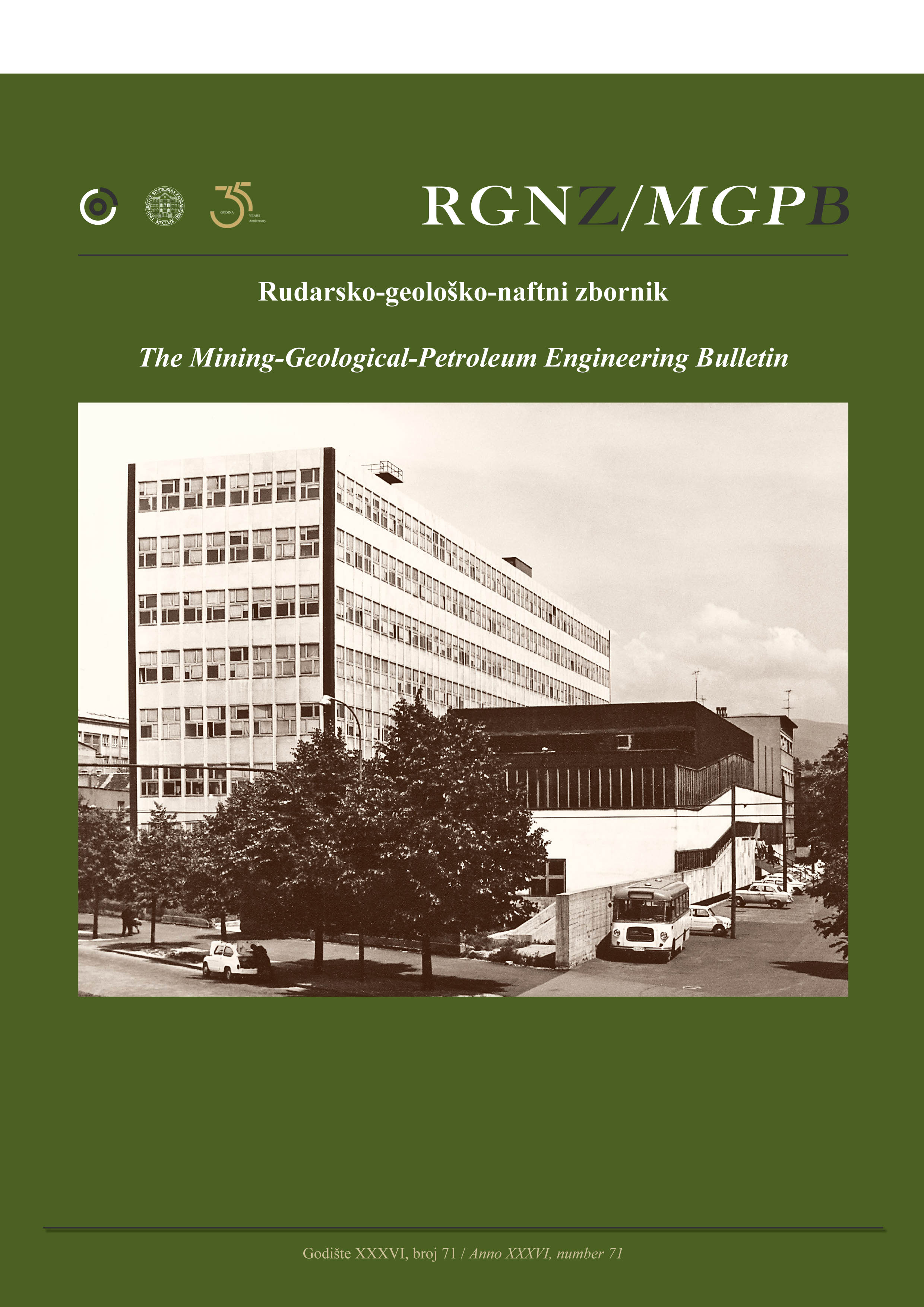Deep Ground Penetrating Radar Imaging for the purpose of exploring ore and geological structures in the Calamine Mine, Central Iran
DOI:
https://doi.org/10.17794/rgn.2024.5.1Keywords:
Deep Ground Penetrating Radar (DGPR), Loza-N DGPR System, geological structure, limestone units, Mehdiabad Calamine MineAbstract
This study aimed to identify mineralized zones within a sedimentary structure, including its discontinuities such as layer boundaries, and faults. The Loza-N model Deep Ground Penetrating Radar (DGPR) system with a 25 MHz antenna was employed to achieve a target depth of up to 200 meters. The investigation was conducted on mine terraces, berms, and the flat northern part of the Mehdiabad calamine mine located in Yazd, Iran. A total of 23 profiles were surveyed. Data acquisition for some profiles involved parallel transects, while others utilized a series approach where the transmitter and receiver antennas were progressively moved along the ground surface. The processed radargrams from selected profiles were compared amongst themselves and with borehole data collected along the same profiles. The geological structure was successfully visualized using two different software programs. Krot software effectively distinguished all limestone units and their zonation. By combining the GPR data with borehole results, it was possible to identify potential ore mineral zones within the marly units. Based on the DGPR traces at borehole locations, high-grade ore minerals in the marly limestone exhibited positive phase and amplitude values, represented by intermediate to maximum color hues. Conversely, light green and light gray limestone containing iron oxide and calcite veins displayed negative phase and amplitude values, with negative zero to intermediate color hues. Dark green limestone showed the most negative phase and amplitude values, reflected by the maximum negative color hues. Finally, light red limestone, likely containing low-grade ore, presented positive but minimal phase and amplitude values, visualized by positive minimum color hues.
Downloads
Published
How to Cite
Issue
Section
License
Copyright (c) 2024 Nasrin Sadrmohammadi, Selma Kadioğlu, Khalil Rezaei, Mahmoud Honarvar

This work is licensed under a Creative Commons Attribution 4.0 International License.
Creative Commons-BY
Authors who publish with this journal agree to the following terms:
In agreeing this form, you certify that:
- You read the ethical codex of the RGN zbornik available at journal web.
- You submitted work is your original work, and has not previously been published and does not include any form of plagiarism.
- You own copyright in the submitted work, and are therefore permitted to assign the licence to publish to RGN zbornik.
- Your submitted work contains no violation of any existing copyright or other third party right or any material of an obscene, libellous or otherwise unlawful nature.
- You have obtained permission for and acknowledged the source of any illustrations, diagrams or other material included in the work of which you are not the copyright owner.
- You have taken due care to ensure the accuracy of the work, and that, to the best of your knowledge, there are no false statements made within it.
- All co-authors of this submitted work are aware of, and in agreement with, the terms of this licence and that the submitted manuscript has been approved by these authors.
Publication licence
You retain copyright in your submitted work, according to journal license policy (CC-BY). By signing this form you agree that RGN zbornik may publish it under the publication licence. In summary the licence allows the following:
Anyone is free:
- To copy, distribute, display, and perform the work.
- To make derivative works.
Under the following conditions:
- The original author must always be given credit.
- The work may not be used for commercial purposes.
- If the work is altered, transformed, or built upon, the resulting work may only be distributed under a licence identical to this one.
Exceptions to the licence
In addition to publishing the work printed under the above licence, RGN zbornik will also enable the work to be visible online.
The journal editorial can change the licence rules anytime but it cannot retroactively restrict author(s) rights.


